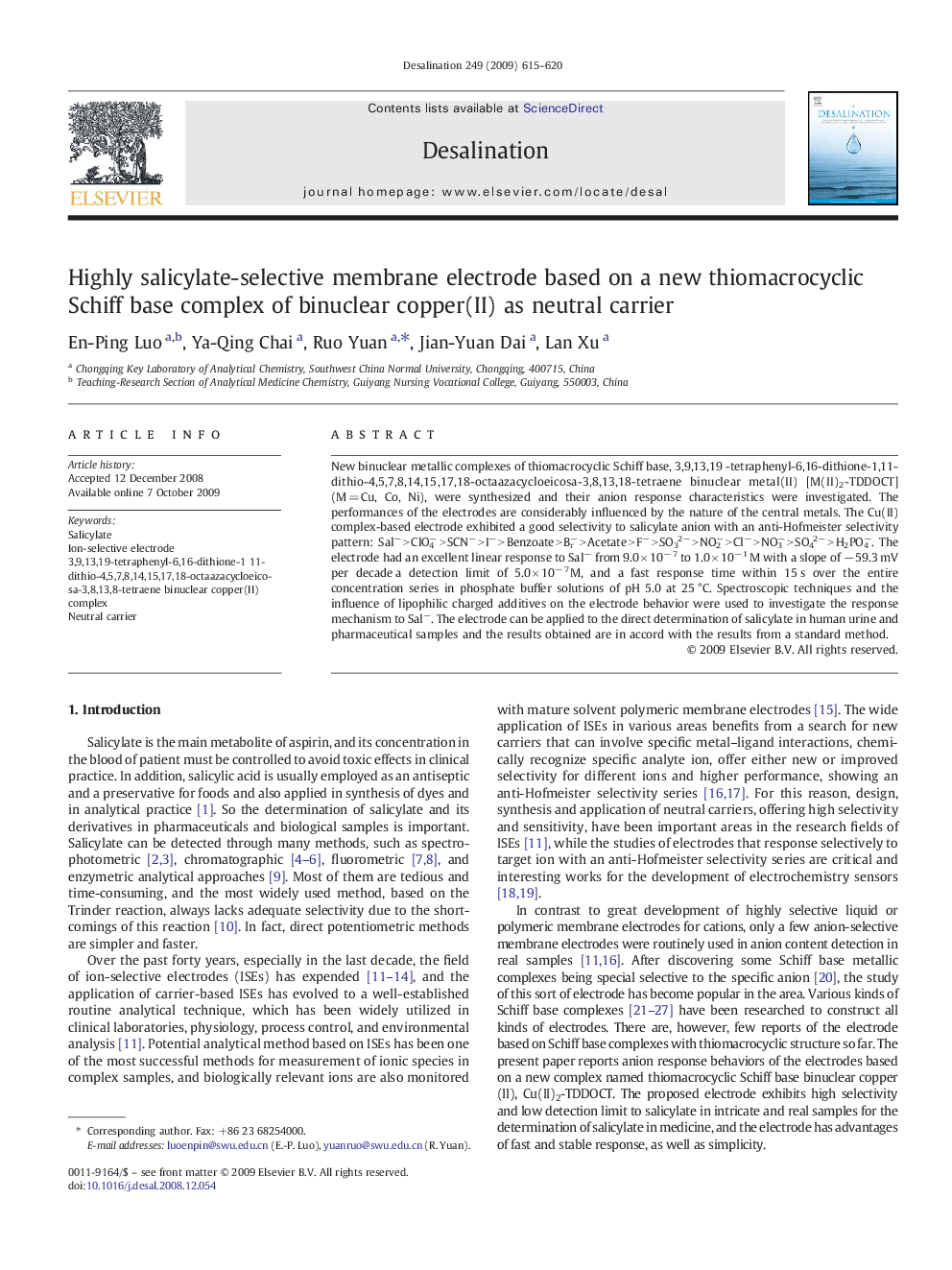| Article ID | Journal | Published Year | Pages | File Type |
|---|---|---|---|---|
| 626468 | Desalination | 2009 | 6 Pages |
New binuclear metallic complexes of thiomacrocyclic Schiff base, 3,9,13,19 -tetraphenyl-6,16-dithione-1,11-dithio-4,5,7,8,14,15,17,18-octaazacycloeicosa-3,8,13,18-tetraene binuclear metal(II) [M(II)2-TDDOCT] (M = Cu, Co, Ni), were synthesized and their anion response characteristics were investigated. The performances of the electrodes are considerably influenced by the nature of the central metals. The Cu(II) complex-based electrode exhibited a good selectivity to salicylate anion with an anti-Hofmeister selectivity pattern: Sal− > ClO4− > SCN− > I− > Benzoate > Br− > Acetate > F− > SO32− > NO2− > Cl− > NO3− > SO42− > H2PO4−. The electrode had an excellent linear response to Sal− from 9.0 × 10− 7 to 1.0 × 10− 1 M with a slope of − 59.3 mV per decade,a detection limit of 5.0 × 10− 7 M, and a fast response time within 15 s over the entire concentration series in phosphate buffer solutions of pH 5.0 at 25 °C. Spectroscopic techniques and the influence of lipophilic charged additives on the electrode behavior were used to investigate the response mechanism to Sal−. The electrode can be applied to the direct determination of salicylate in human urine and pharmaceutical samples and the results obtained are in accord with the results from a standard method.
